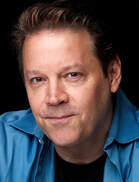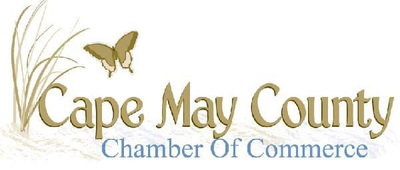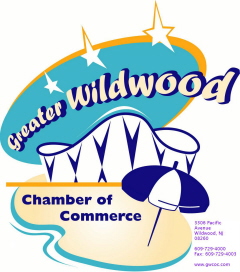THE DEATH OF SHERLOCK HOLMES?
A radio-style performance based on two stories by Sir Arthur Conan Doyle:
The Final Problem and The Adventure of the Empty House
Adapted and Directed by Mark Edward Lang
TWO WEEKENDS ONLY - Friday & Saturday
November 15 & 16, 22 & 23, 2024 at 7:00 PM
Location: ELTC at Cape May Presbyterian Church, 500 Hughes Street, Cape May, NJ
The Final Problem and The Adventure of the Empty House
Adapted and Directed by Mark Edward Lang
TWO WEEKENDS ONLY - Friday & Saturday
November 15 & 16, 22 & 23, 2024 at 7:00 PM
Location: ELTC at Cape May Presbyterian Church, 500 Hughes Street, Cape May, NJ
THE DEATH OF SHERLOCK HOLMES, RADIO-STYLE - BACK BY POPULAR DEMAND!
Enter the exciting world of fiction’s most famous detective, Sherlock Holmes, in what appeared (at the time) to be his final case, as told by his trusty companion Dr. Watson. Locked in a fierce battle with his arch-enemy, Professor Moriarty, they come face to face at Reichenbach Falls, and then…
This new adaptation of two of Arthur Conan Doyle’s classic stories, “The Final Problem” and “The Adventure of the Empty House” (which follow each other in the Holmes timeline) is presented radio-style on East Lynne’s stage, at the historic Cape May Presbyterian Church.
Many of you will know the various adaptations of these characters-- famously starring Basil Rathbone and Nigel Bruce on film, and more recently Benedict Cumberbatch and Martin Freeman on television. But the Sherlock Holmes adventures were also presented on the radio in the United States between 1930 and 1950. We continue in the tradition of those classic radio broadcasts.
Enter the exciting world of fiction’s most famous detective, Sherlock Holmes, in what appeared (at the time) to be his final case, as told by his trusty companion Dr. Watson. Locked in a fierce battle with his arch-enemy, Professor Moriarty, they come face to face at Reichenbach Falls, and then…
This new adaptation of two of Arthur Conan Doyle’s classic stories, “The Final Problem” and “The Adventure of the Empty House” (which follow each other in the Holmes timeline) is presented radio-style on East Lynne’s stage, at the historic Cape May Presbyterian Church.
Many of you will know the various adaptations of these characters-- famously starring Basil Rathbone and Nigel Bruce on film, and more recently Benedict Cumberbatch and Martin Freeman on television. But the Sherlock Holmes adventures were also presented on the radio in the United States between 1930 and 1950. We continue in the tradition of those classic radio broadcasts.
THE COMPANY

MARK EDWARD LANG (Playwright, Director, John H. Watson) is also the author and co-star of the biographical plays Zelda & Scott: A Life Affair (NJ, NYC and at the Fitzgerald Museum in Alabama) and Lunt and Fontanne: The Celestials of Broadway, which has been presented in New York (the NY International Fringe Festival, Stage Left Studio) and at the Classic Theatre (San Antonio, Texas). Regional theater credits include many shows with ELTC; recent work there includes Possessing Harriet (director), Who Am I This Time?, Biography, Zorro!, The Guardsman (opposite his wife, Alison J. Murphy), Why Marry? and Eugene O’Neill’s Anna Christie (also director). Other regional theater includes lead and featured roles in Ted Tally’s drama Terra Nova (Captain Scott), The Importance of Being Earnest (Jack), Stones in his Pockets and Welcome Home, Marian Anderson (Off-Broadway and tour). Recent work includes international performances in Tanzania, Istanbul and Copenhagen, Denmark with corporate training group Leadership-Masters. Member AEA, SAG-AFTRA and The Dramatists Guild.
ARTHUR CONAN DOYLE (Author) was born in Edinburgh, Scotland, in 1859. He entered the University of Edinburgh Medical School in 1881. One of his professors was Dr Joseph Bell, who became the model for Doyle's Sherlock Holmes by his powers of observation to help him deduce the nature of a patient's affliction. Conan Doyle began writing in school, to earn a little extra money, and his first story was published in 1879. When his father fell ill, Doyle became the breadwinner for the family. He worked for a time as a ship's doctor, then opened his own medical practice near Portsmouth. In his spare time, he did more writing.
His third attempt at a novel was A Study in Scarlet. This story, which introduced Sherlock Holmes to the world, was published in 1887. Encouraged by publishers to keep writing, Conan Doyle wrote his second Holmes mystery, The Sign of the Four, in 1890. So successful were these novels, and the stories which followed, that Conan Doyle could afford to give up his medical practice and devote himself to writing full time.
The first Sherlock Holmes short story, A Scandal in Bohemia, appeared in The Strand Magazine in 1891, to be followed by two dozen more stories over the next several years. The stories proved enormously successful, but Conan Doyle tired of his own creation, and
in 1894 he killed Holmes off in The Final Problem.
He underestimated the popularity of his creation. So great was the hold that the character of Sherlock Holmes had taken on the public imagination that Conan Doyle found himself at the center of a storm of controversy. Inundated with letters of protest, he eventually gave in and revived the character of Holmes, who appeared in numerous additional short stories over the next twenty-three years.
But Conan Doyle did not confine himself to Sherlock Holmes; he wrote several popular works of historic fiction, including Micah Clarke (1888), The White Company (1890), Rodney Stone (1896), and Sir Nigel (1906). Conan Doyle served as a doctor in the Boer War, and on his return he wrote two books defending England's participation in that conflict. It was for these books that he received his knighthood in 1902. After the death of his son in World War I, Conan Doyle became interested in spiritualism. He was convinced that it was possible to communicate with the dead, and his views led to a certain amount of ridicule from more mainstream society.
Sir Arthur Conan Doyle died in 1930. He can rightly be credited with helping create the literary genre of the detective story. Though Edgar Allen Poe's Dupin (featured in ELTC’s past production of The Poe Mysteries) pre-dates Sherlock Holmes, it was the Holmes' stories that solidified in the public mind what a good detective should be.
His third attempt at a novel was A Study in Scarlet. This story, which introduced Sherlock Holmes to the world, was published in 1887. Encouraged by publishers to keep writing, Conan Doyle wrote his second Holmes mystery, The Sign of the Four, in 1890. So successful were these novels, and the stories which followed, that Conan Doyle could afford to give up his medical practice and devote himself to writing full time.
The first Sherlock Holmes short story, A Scandal in Bohemia, appeared in The Strand Magazine in 1891, to be followed by two dozen more stories over the next several years. The stories proved enormously successful, but Conan Doyle tired of his own creation, and
in 1894 he killed Holmes off in The Final Problem.
He underestimated the popularity of his creation. So great was the hold that the character of Sherlock Holmes had taken on the public imagination that Conan Doyle found himself at the center of a storm of controversy. Inundated with letters of protest, he eventually gave in and revived the character of Holmes, who appeared in numerous additional short stories over the next twenty-three years.
But Conan Doyle did not confine himself to Sherlock Holmes; he wrote several popular works of historic fiction, including Micah Clarke (1888), The White Company (1890), Rodney Stone (1896), and Sir Nigel (1906). Conan Doyle served as a doctor in the Boer War, and on his return he wrote two books defending England's participation in that conflict. It was for these books that he received his knighthood in 1902. After the death of his son in World War I, Conan Doyle became interested in spiritualism. He was convinced that it was possible to communicate with the dead, and his views led to a certain amount of ridicule from more mainstream society.
Sir Arthur Conan Doyle died in 1930. He can rightly be credited with helping create the literary genre of the detective story. Though Edgar Allen Poe's Dupin (featured in ELTC’s past production of The Poe Mysteries) pre-dates Sherlock Holmes, it was the Holmes' stories that solidified in the public mind what a good detective should be.













